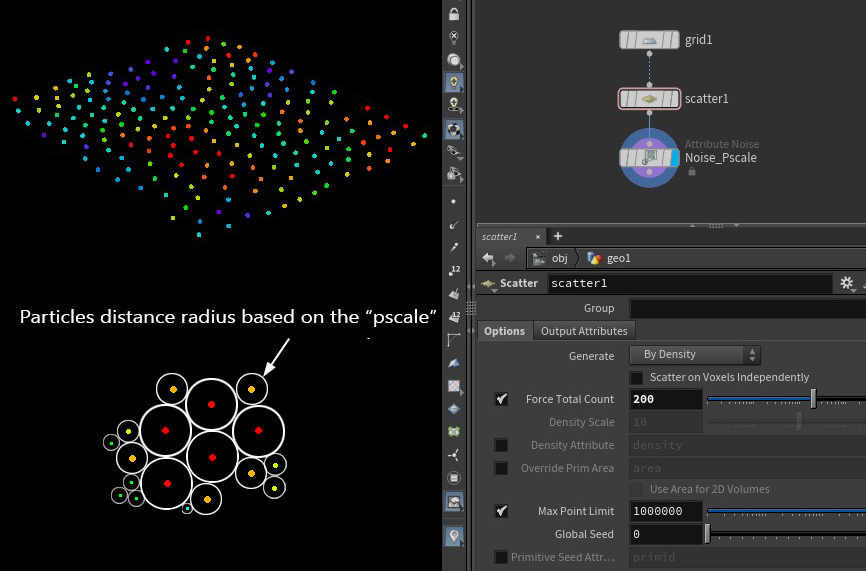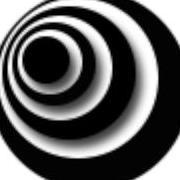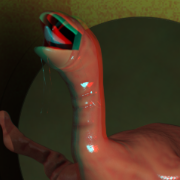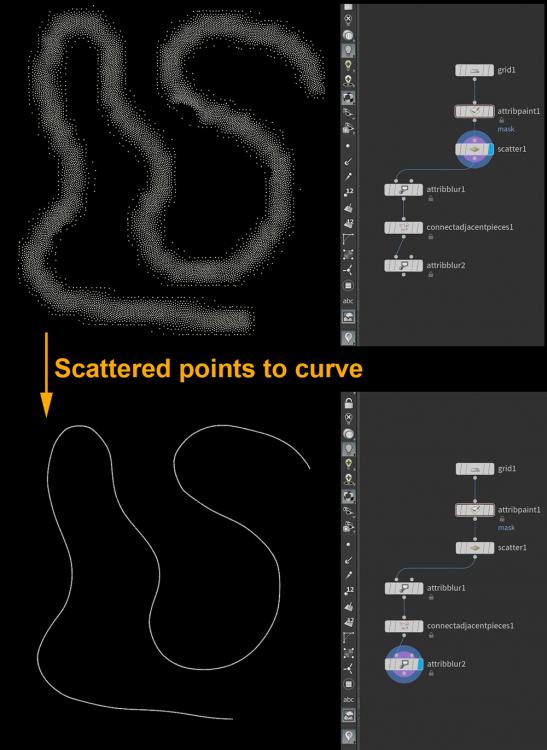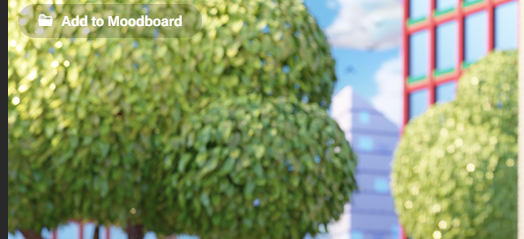Search the Community
Showing results for tags 'scatter'.
-
Somehow I can't figure out this. I'm using Scatter and Align, and I would like to drive the alignment with curves. Painting the normals with Comb SOP didn't work (at least I couldn't make it work). How would you do this? paint_alignment.hiplc
-
Hey everyone, I want to scatter points on a surface while dynamically adjusting their distances based on the "pscale" attribute. When I change the "pscale" value, the spacing between points should automatically update to reflect the new scale. Any suggestions on how to achieve this? Thanks for helping. Points Pscale.hip
-
As you know we can bind a scatter field to pyro bake volume node, how can I create that field in the pyro dop network workflow?
-
Hi everyone. My first post. I`m sorry. I cant post Hip file. (NDA reasons) I have scene, where I need to copy to points exact amount of pigs (varies between 8-20 - weighted distribution) Everything is ok, but now I need to rid off self penetrations. Is there an elegant solution to this problem? (Maybe VEX magic - loop through objects, then move a bit) I tried following methods so far: 1. Set pscale by Volum Spheres: It`s legit method, but it works best in 3D. I think it`s little bit overkill. 2. Houdini Simon`s method of subtraction. Its slow (I`ve found HDA which does the same, but in VEX - link: https://mcworldkit.gumroad.com/l/CollisionsRemoval) I don't have full control how many pigs will be removed though. Thank you for all your help
- 8 replies
-
- scatter
- collisions
-
(and 1 more)
Tagged with:
-
Hey, guys--how can I place a single point at the topological surface center (not centroid) of a curved surface? This comes after a lot of fracturing and blasting various prims, so the resulting geo is 3D but in the curved-2D sense (vs. extruded/solid). I've tried raying points but based on the shape it will frequently find the closest distance to be right on the edge of the geo instead of nicely in the center using min distance, and using vectors is no better. (This includes raying points that start at the centroid of the pieces.) It's okay if it's not 100% perfect, so if it's easier to do this by removing points of the existing geo instead of scattering a new point that's fine. I think maybe creating per-resultant-piece UVs would be the ticket(?), but I'm not sure how I would make lumpy and not-all-connected geo into pretty square 1x1 UV islands. Perhaps I can abuse the measure sop somehow? Group outside/unshared edges, measure each point to the distance of each edge, average those distances, and grab the point with the closest to a bbox max * 0.5? These things are on the tip of my brain but not spilling out to my fingers on the keyboard.
-
Hello, I'm han. I have a question. I did Sphere -> Mountain(noise animated) -> Scatter & Sphere -> Mountain(noise animated) =Points and Sphere Merge (*so I want to sphere moving and scatter points are also moving) but Scatter points are jittering(not stick to sphere). How can I fix it? Roughness down, Octaves down -> Little bit comfort movement but, is that solution to not jittering(not change roughness or octaves) ? Thanks!!
-
Hey wizards I have problems with exporting instanced scattered VDB clouds( they build a cloudscape). When i try to put a ROP geometry or a ROP alembic node at the end of the chain it doesnt work... My Goal is to export the "cloudscape" as a single vdb file to use that in 3ds max with vray for Production. Can anyone explain how to properly do that? Thanks in advance ;-) Cheers, Marcel
-
Hey, So i'm looking for a way to animate and freeze at some frame the global seed of the scattering node. I'm trying to replicate the polyjuice effect in Harry potter 2 and i'm having a bit of struggle with the scattering. The effect is some sort of bubbles that grow and reduce on a morphing head into an other. I managed the bubbles effect and the morphing just fine but the bubbles are always on the same place. They are controled by a scattering and color and i would like to animate it in that way : - when the color is black there are no bubbles and when it's white they grow. I would like the global seed of the scattering to change when it's black and freeze and take the last value when it's white. for exemple at from frame 0 to 10 it's white with the scattering seed set a 1, then from frame 11 to 15 it's back and the scattering seed changes to 2 then from frame 16 to 26 it's white again with the scattering froze to 2 and on and on in that way. Does anybody has a way to make that happen ? I joint the file with the pig head so that anyone can open it without any additionnal file. Thank you so much for your help PS: i'm very new to houdini. head_bubbles_ocforum.hipnc
-
Is it possible to create patterns on a very high decimated triangulated mesh in Houdini similar to these patterns created in Zbrush but with scatter points? file.jpg (600×500) (artstation.com)
- 10 replies
-
Hi, I'm having this issue where (I think) the hairgen is scattering along the density attribute I made with an attribute paint, causing each strand to move randomly on a deforming mesh imported with an alembic file. Any solution for this? *(SOLVED) - it seems that with an obj sequence, the guide deform works correctly and doesn't make the any unnecessary scattering towards the hairgen density area, but i'm forced to use a guide sim for the simulation, if anyone find a way to bring the guide deform into a vellum dop i'll appreciate it.
-
- guide groom
- guide sim
- (and 6 more)
-
How to move points only on Y axis using noise?
carl45456 posted a topic in General Houdini Questions
Hello, I am scattering points onto a grid and I am using a noise to displace it, but I only want to move the points vertically. How would I achieve that? -
Hi guys, I tried to extract a curve from some scattered points (generated by attribute paint), but the resulting curve is not that clean. Curve's points numbers are not sorted correctly, so I can't resample the curve. How can I fix it? Thanks for helping. Curve from scattered points.hip
- 3 replies
-
- attribute paint
- scatter
-
(and 1 more)
Tagged with:
-
Is it possible to control cellular noise on a mesh with points from the scatter node?
-
While trying to bring in the moana island scatter data into LOPs, since each point data has its own obj filepath attribute to scatter stuff; i was wondering how i can use these with the instancer LOP within Solaris and make it work since it has the "name attribute" parameter. i tried using the instance Sop within the "sop create" and even tried but it keeps crashing, running out of ideas at this point. I even tried instancing within SOPs and using "sop import" within Solaris but no luck another crash. tldr - how to scatter lots of objs with the help of filename string attribute on each point cleverly without having to manually bring in each obj file within Solaris? thank you!
-
Hey fellow Houdini artists! I'm a long time Max and Maya user and I'm now learning Houdini. I'm trying to figure out if there is a way to use heightfield paint or heightfield draw mask to store values that I can later use to affect the pscale of objects in a heightfield scatter. For example I'd like to scatter bushes on a landscape. I want each point to get a random pscale factor still...Like between 0.5 and 1.5. However, I then want to multiply that value by another masks value that I can paint. This way I could increase or decrease the general size of the pscale in the areas I've painted. This would allow me to create taller bushes in some areas or smaller bushes in other areas. This seems fairly straight forward to do with scatter, copy to points and attribute paint nodes if I'm not using heightfields. However, I'd like to do this with heightfields and heightfield scatters Is something like this possible? Thanks, Tim J
- 1 reply
-
- pscale
- heightfield
-
(and 1 more)
Tagged with:
-
Hey, I have a bunch of moving curves that appear and disappear (meaning the prim id keeps changing), and I scatter points on them which I'm using a solver to kill at the right time but therefore they become static and I want to use an attributeInterpolate to track the point back to their curve. The problem is that the attributeInterpolate is asking for a sourceprim id but as I said above the the prim id keeps changing. I was able to create a unique integer attribute for the primitives which then is inherited by the scattered points. how can I now get the prim id from the curves to the scattered points based on a matching attribute? I tried an attribute wrangle but I'm really new to vex and this is what I wrote which doesn't really work haha. i@sourceprim = int idtoprim(1, id); first input is the points, second input is the curves. Thanks
-
i want to scatter points on a deforming mesh (a growing mesh) based on its curvature attribute. currently they are appearing and disappearing as the curvature values are changing (based on the deforming mesh) every frame. however i want them not to disappear once they are created and stick to their original position they were created (as closely as they can). PS: the deforming mesh is generated from a vdb sdf. i am using a triplanar UV on it. i would highly appreciate any tips and help.
-
Howdy team. I'm new to the forum, so apologies if this is a daft question. I am following a FXPhD tutorial which has an old vers of Houdini and the nodes and parameters are sometimes different. In the exercise I'm doing, the tutor is copying some curves onto a grid mesh to make grass. He manipulates them, copies the curves to attach to the grid mesh with a copy to Geo node, then scatters them across the grid using a scatter Node. There is some scripting to alter the grass length etc. But the grid mesh Geo disappears. We can only see the grass. He gets the Geo to reappear again by checking the preserve Geo tick box in the scatter Node. This box isn't in my vers of Houdini, which is a current one. Does anyone know a fix to this problem? With mesh Geo disappearing when using a copy and scatter node to copy curves to mesh? TIn other words, the curves are grass and the grid mesh is the ground. The ground disappears and I don't know how to get it back. Any help appreciated. I'm a beginner. Thanks.
-
i want to create an abstract art like the image attached below, it has a main sphere with differrent size of spheres scattered on it, i can create a sphere with scatter and copy stamp nodes to create something like this, but how do i keep the spheres from colliding with each other? and they should also stick to t he main geometry. please help.
-
Hey, I have a very frustrating issue. I have an alembic that I have scattered points onto and managed to get them to stick in place. The problem is now the random values I have assigned to these points i.e pscale, change every frame. Does anyone have an idea how resolve this, please? Thanks Andy
-
Hi guys Ive been struggling to get my head around making similar leaves like the ones in the pictures. Any suggestions? I cant seem to make the leaves 'lay down' similar to how a hair groom would be combed or a feather system would lay the leaves down. Damien leaf_001.obj leaves.hiplc
-
Hello everyone ! I have some trouble with the foreach loop, and after some search I have not found an answer... I want to connect points from two scatters and do some operation on each pair of points : connect them to a line, resample, noise and set pscale depending of point number of each loop. Here is what I have : A scatter "A" creates two points. For each of thoses points I want to scatter (with scatter "B") another point and connect them together. Here is my two issues : 1- I don't know how to scatter from a sop outside the foreach loop. 2- I connect my points using the add sop setted to "Polygons > By Pattern > Polygon 0 > 0-$N". Will it work on the second iteration ? Here is an image of my network : Thanks for helping ! scatterForEach.hipnc
-
Hi guys (and gals)! How can I split the scattered points of a geometry into three groups, depending on the scattered points position to three different objects? I have tried with point clouds, with nearpoints and everything I could imagine, but I can't seem to figure it out! It either relies on radius, or doesn't sort correctly. I also tried with the sort node but it really messes with my sopsolver which is used for the infection down the stream.. To better explain the situation, lets say I have the geometry I want to split scattered with 10 points, and the point targets I want to use as refs have 2, 4, 4 points respectively. How can I "sort" the scattered points to either belong to group 1, 2, or 3 explicitly, depending on the distance from the point targets? Each point should belong to one group and one group only. And the sorting only has to happen in the beginning of the sim, after that pop forces take over. If anybody has any idea, please, feel free to share! Thank you for your time, G.
- 3 replies
-
- point cloud
- proximity
- (and 4 more)
-
I have a tank model and would like to animate the treads. What is the best way to achieve this? I'm no VEX master by any stretch. Looking for a workable approach to this. Thank you.


